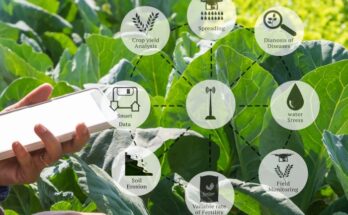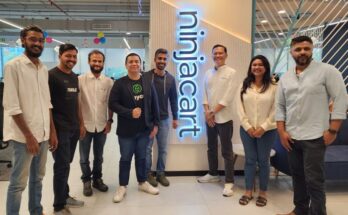In line with the Prime Minister’s vision towards maximising digital technology for social benefit, Manoj Ahuja, Secretary, Department of Agriculture and Farmers Welfare (DA&FW) launched the mobile application and the web portal for GCES (General Crop Estimation Survey) in New Delhi on Thursday. The portal and mobile application have been designed to transform agricultural practices across the nation. Ahuja emphasised on the need for real-time estimates and technology in agriculture. He mentioned that the accuracy of the data is a very important component for truthful and reliable outcome generation and the responsibility of ensuring accuracy of the data lies with the data providers as well. Hence, he urged all the states to adopt the GCES portal and application to ensure creditability.
Arun Kumar, Sr Economic and Statistical Adviser apprised the audience of the major initiatives currently being undertaken at DA&FW to enhance data accuracy and improve digital data governance in agriculture. He added that this initiative set to herald a new era in the agriculture sector by providing more accurate and real-time monitoring of crop yields.
You may also like to read: Emerging technologies and precision farming SaaS to design future landscape for agriculture
Ruchika Gupta, Adviser, DA&FW shared the salient features of the portal and the mobile application of GCES. It has been developed by the Department of Agriculture and Farmers’ Welfare for leveraging technology to enhance the reach, scope, and outcome of government actions in the course of development. She added that the automation of the GCES process will ensure on-time reporting of crop statistics and the accuracy of the data. Gupta also mentioned that the agencies involved in conducting CCE in different states are revenue and agriculture departments and directorates of economics and statistics.
Sonia Sharma, Additional Statistical Adviser, DA&FW presented the revamped process flow of the General Crop Estimation Survey using the web portal and the mobile application, which are currently in the pilot stage. The piloting of these two has been planned in 12 states and will be rolled out by the third week of October 2023.
Key Challenges addressed by GCES web portal and mobile application
1. Delay in Reporting: To date data collection, compilation and yield estimation is a completely manual process which causes delays in reporting by states. In the new process, the field data will be collected using a GPS-enabled mobile application and will be stored in the server which ensures on-time reporting of crop statistics.
You may also like to read: Technology adoption is key to sustainable regenerative farming
2. Transparency: GPS-enabled devices provide precise latitude and longitude coordinates for data collection points. This information ensures that data is linked to specific geographic locations, leaving no room for ambiguity or manipulation of data regarding where it was collected.
Key features of GCES web portal and mobile application
1. Comprehensive Information: The portal and the app provide a comprehensive repository of yield estimation including village-wise GCES plan and plot details where the crop-cutting experiments are conducted, post-harvesting crop weight and driage weight of the crop.
2. Geo-referencing: Geo-referencing is one of the key features of the mobile application, which enables the primary worker to draw the boundary of the experimental plot and upload photos of the plot as well as of the crops through it. This feature will ensure transparency and accuracy of the data as well.





